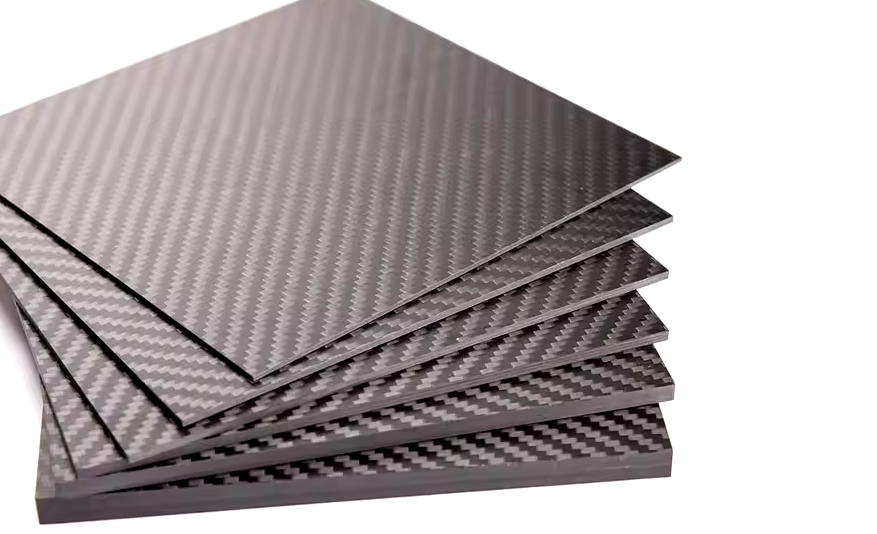In the world of construction, the drive for lighter, stronger, and more durable materials is accelerating as industries seek to improve efficiency, reduce environmental impact, and push the boundaries of innovation. Among the materials that are gaining significant traction in lightweight construction, carbon fiber sheets stand out for their unparalleled strength-to-weight ratio, corrosion resistance, and flexibility. As these properties become increasingly important across various sectors, carbon fiber is positioning itself as a leading material for the future of construction. Here’s why carbon fiber sheets are poised to revolutionize lightweight construction.

1. Unmatched Strength-to-Weight Ratio
One of the key reasons carbon fiber sheets are taking the construction world by storm is their exceptional strength-to-weight ratio. Carbon fiber is stronger than steel but significantly lighter, making it an ideal choice for applications where structural integrity and weight reduction are both critical. In traditional construction materials, such as steel or concrete, weight can be a significant challenge, especially when dealing with large-scale projects or those requiring mobility (like modular buildings or temporary structures).
Carbon fiber sheets can support high loads while maintaining minimal weight, offering the best of both worlds: stronger, lighter structures that require fewer materials and less energy to build, transport, and maintain. This makes them an attractive option for a wide range of construction applications, from high-rise buildings and bridges to commercial and residential buildings.
2. Corrosion Resistance for Longevity
Unlike metals like steel, which are susceptible to rust and corrosion when exposed to moisture, carbon fiber sheets do not corrode. This makes them an ideal material for construction in harsh environments, such as coastal regions with high humidity, areas with heavy rainfall, or locations subject to chemical exposure. Structures made with carbon fiber are less likely to suffer from degradation over time, resulting in lower maintenance costs and longer lifespan for the built environment.
For example, reinforced concrete beams or steel columns may need to be replaced or repaired after years of exposure to the elements, especially in marine or industrial environments. By using carbon fiber sheets, the lifespan of these components can be extended, offering significant long-term savings for both commercial and public infrastructure projects.
3. Design Flexibility and Aesthetic Appeal
Carbon fiber sheets are not just functional—they also offer incredible design flexibility. The material is highly customizable and can be molded into various shapes and forms, making it an excellent choice for innovative architectural designs and modern aesthetic applications. Whether for curved facades, unique building frameworks, or modular structures, carbon fiber allows architects and engineers to push the limits of design while maintaining high strength and low weight.
Additionally, carbon fiber has an industrial aesthetic that appeals to modern, contemporary designs. Its sleek, high-tech look has found favor in luxury real estate, commercial spaces, and even art installations, where the material’s visual appeal can complement cutting-edge architecture.
4. Increased Energy Efficiency in Construction
As energy efficiency becomes a growing priority in construction, carbon fiber plays a significant role in reducing the energy required for building operations. For example, when used in the framework or cladding of a building, carbon fiber sheets help to reduce the overall weight of the structure, which can lead to lower energy consumption during transportation and assembly. In addition, carbon fiber’s insulating properties help to improve thermal performance, contributing to energy savings in the long run.
In buildings and structures that require insulation or are exposed to extreme temperatures, carbon fiber can provide added benefits by minimizing heat loss in colder climates or limiting heat gain in warmer regions. As a result, carbon fiber can play an important role in eco-friendly construction and meeting the growing demand for green buildings.
5. Sustainability and Environmental Impact
Sustainability is a driving force in the construction industry, and carbon fiber sheets are gaining attention for their potential to reduce environmental impact. While carbon fiber production has historically been energy-intensive, technological advancements are making the manufacturing process more sustainable. As production techniques improve and the recycling of carbon fiber becomes more efficient, the material is expected to have a smaller environmental footprint.
Moreover, the use of carbon fiber can lead to reduced material usage and lower transportation costs due to the lightweight nature of the material. By reducing the amount of raw material needed, carbon fiber contributes to resource conservation, and its longevity means that fewer replacements and repairs are required over time, further reducing waste in the construction process.
6. Durability Under Extreme Conditions
Carbon fiber excels in environments where traditional materials might struggle. For instance, extreme weather conditions, high-traffic areas, and vibration-prone environments can take a toll on conventional building materials. Carbon fiber, however, is highly resistant to environmental stressors such as:
- UV degradation
- Extreme temperatures (both hot and cold)
- Chemical exposure
- Vibration and shock
In high-rise buildings, bridges, or public infrastructure, this level of resilience ensures that structures remain safe and functional over time, with minimal wear and tear. Transportation infrastructure, such as bridges and tunnels, benefits from the durability of carbon fiber, ensuring that maintenance costs are reduced and safety is enhanced over the long term.
7. Speed of Construction
Because of their lightweight nature and ease of handling, carbon fiber sheets can significantly accelerate construction timelines. They can be prefabricated off-site and quickly assembled on-site, reducing labor costs and construction time. This is particularly advantageous for modular or temporary buildings, where speed is essential. By replacing heavier, more labor-intensive materials with carbon fiber, the entire construction process becomes more streamlined and efficient.
Additionally, carbon fiber sheets can be combined with other advanced construction techniques, such as 3D printing and robotic construction, further speeding up the building process.
8. Cost-Efficiency in the Long Run
Although carbon fiber sheets can have a higher initial cost compared to traditional materials like steel or aluminum, their long-term cost benefits often outweigh the upfront investment. The combination of lightweight properties, durability, and reduced maintenance requirements leads to lower operating costs over the lifetime of a structure. Additionally, the energy savings from lighter materials and better thermal performance can significantly offset the higher material costs in the long run.
9. Applications in Infrastructure and Bridges
One of the most promising areas for carbon fiber in construction is in the infrastructure sector, particularly in bridge construction and rehabilitation. Carbon fiber reinforced polymer (CFRP) sheets are used to strengthen existing structures, increasing their load-bearing capacity and extending their lifespan without the need for complete demolition and rebuilds.
The ability to retrofit and strengthen aging bridges and tunnels with carbon fiber is a cost-effective and time-efficient solution, as these materials are lightweight, easy to apply, and highly effective in reinforcing structural integrity.
Conclusion
Carbon fiber sheets are rapidly becoming the material of choice for lightweight construction, offering a range of benefits that traditional materials simply can’t match. From strength and durability to design flexibility and sustainability, carbon fiber has the potential to transform the way we build and maintain structures.
As construction technology continues to evolve and manufacturing processes improve, carbon fiber’s role in the industry will only grow. Whether it’s reducing the weight of high-rise buildings, enhancing the longevity of bridges, or providing eco-friendly solutions for modern architecture, carbon fiber sheets are undoubtedly the future of lightweight construction.













































